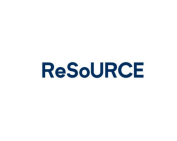Project Name: Refractory Sorting Using Revolutionising Classification Equipment
Open Call Topic(s): Smart Cities and Circular Economy in Buildings
Description
The project ReSoURCE strives to innovate the full process chain of refractory recycling with AI-supported multi-sensor sorting equipment as its core technology. If successful, the outcome will reduce Europe’s CO2 emissions by 800 k tons per year.
Extractive industries (including refractory raw material production) are responsible for 50% of the world’s carbon emissions and more than 80% of biodiversity loss. To address this, the European Commission is prioritizing the funding of innovation actions that sustainably increase access to primary and secondary raw materials (SRM), in particular critical raw materials for EU industrial value chains and strategic sectors. Refractory products are indispensable for all high-temperature processes above 1200°C, such as steel, cement, glass, and nonferrous metal production. Since the refractory lining of a furnace or vessel is designed for a specific material and application, multiple refractory product types with different chemistries are combined to achieve the required performance. This poses major challenges for the recycling process as the chemical composition of the recycled material is critical if it is to be used in subsequent refractory production. In most cases, the primary raw material production has the highest impact on a product’s carbon footprint.
The ReSoURCE project goal is the development of a working sensor-based system for refractory waste sorting and powder handling. If the project is successful, it will enable the robust engineering of automated sorting equipment that will increase the recycling of refractory breakout material from the current estimate of 7–30% (plus 10% of downcycling) to a total 90%. With approximately 28 million tons of used refractories generated annually, the ecological and societal benefits will be considerable.
Reason for applying to HSbooster.eu services
Though we understand its importance to achieve our objectives, our project consortium does not have a clear leader representing us in the standardisation ecosystem for refractory industries. We may have representatives within our wider partner organisations, but the fragmented nature of our main commercial partners makes even these difficult to identify.
Our stakeholder mapping has identified:
- the World Refractories Association, a forum to debate regulatory issues affecting refractories, as an initial source of information
- Cerame-Unie (https://cerameunie.eu/), the relevant industry association that RHI Magnesita belongs to
- RESTAR, HARMONI projects - past EU-funded projects addressing standardisation that RHI were partner in directly or through Cerame-Unie
We would hope the booster service could provide an initial steering on our strategy specific to our project goals and technologies, for engaging with and influencing standardisation processes to increase circularity for this significant European and global industry, and help to identify key contacts to reach out to as early as possible.
If there are aspects for which technical committees do not exist, then we may have team members suitable to take a leading role in proposing new standards.
Main Standardisation Interests
The primary focus area in that we see standardisation having an impact is in the sorting of recovered material from refractories. At present, hand sorting is occasionally supplemented by more sophisticated techniques to determine the chemistry (e.g., laser-induced breakdown spectroscopy [LIBS] or handheld X-ray fluorescence), but not standard. We will further develop and validate these techniques in combination with an array of tests and automation, towards pilot implementation; to support this, we aim to engage with standardisation processes in the industry.
Downstream from the recovery process, our project will re-introduce the material as recycled refractory bricks, for which standards also need to be understood or defined.
We also expect some of the recovered material to be usable in other industrial products, meeting defined particle size limits and constraints. This will require engaging with a variety of construction industry standards and possibly other products as we identify and explore opportunities.
Project Acronym: ReSoURCE

Grant Agreement Id: 101058310
Start Date:
End Date:
Programme: HORIZON.2.4 - Digital, Industry and Space
Call for proposal: HORIZON-CL4-2021-TWIN-TRANSITION-01
Funding Scheme: HORIZON-AG - HORIZON Action Grant Budget-Based



